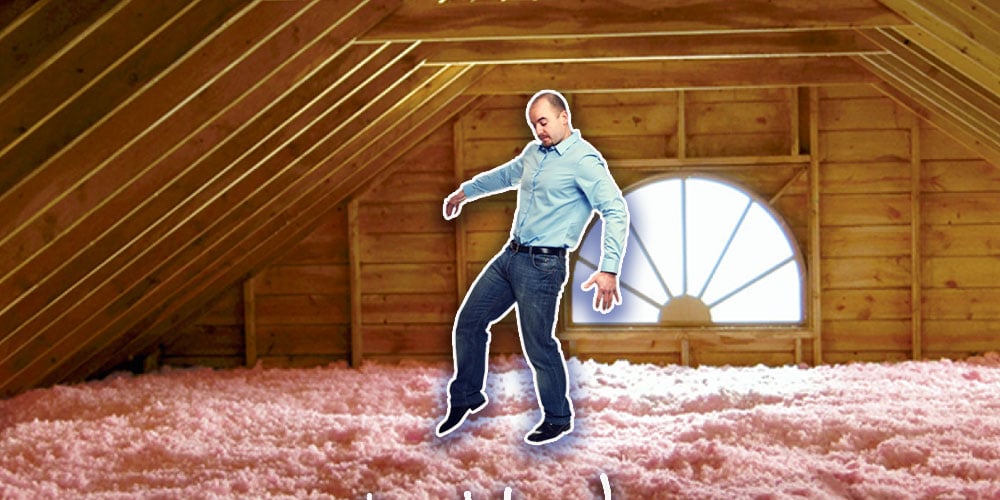How to Walk in an Attic with Insulation on the Floor


Navigating your home's attic might seem daunting, especially when it’s blanketed in a thick layer of insulation.
You may ask, “How can I safely walk in my attic without compromising the insulation or, more importantly, my safety?”
As a network of insulation contractors, RetroFoam dealers have spent their fair share of time in attics and understand how to move around up there. We’re here to help unravel this cozy attic puzzle to put your mind at ease.
Understanding Attic Insulation Types
Before we step foot into the attic, it’s crucial to distinguish between the two primary ways attics are insulated – attic flat or floor insulation and roof deck insulation.
When we talk about floor insulation, we’re referring to the layer that sits right beneath your feet as you navigate the attic space. Roof deck insulation isn’t a concern for walking in the attic since it is applied to the underside of the roof itself, leaving the floor less cluttered.
The Golden Rule of Attic Safety
Here’s the golden rule for attic adventures – always step on the studs or trusses.
These are the bones of your attic, offering the firm support needed to bear your weight. Ignoring this rule and stepping on the drywall or insulation is a fast track to an unplanned ceiling inspection from below, thanks to our unforgiving friend, gravity.
Installing Boards for Safe Passage in the Attic
For those looking to convert their attic into a storage space or who need to access mechanical units up there, laying down boards to create walkways is a smart move.
However, a common obstacle arises when the insulation level surpasses the height of the floor joists.
Here’s how to handle it.
Fiberglass Insulation
You're in luck if your attic is insulated with fibrous materials like fiberglass.
This type of insulation can be easily pushed aside or rearranged to lay down boards, creating a stable path.
Spray Foam Insulation
Got spray foam attic insulation? No problem.
If it’s open cell spray foam, it can be cut away with something as simple as a bread knife or your hands, if you’re feeling industrious, to clear the way for your walkways.
Understanding the Trade-Offs: Convenience vs. R-Value
You probably think removing or compressing insulation will reduce the attic’s R-Value.
You’d be right.
Altering your attic’s insulation for walkability does come with the trade-off of losing some insulation effectiveness in those modified areas. This could lead to a slight increase in heat transfer, affecting your home’s overall energy efficiency.
Deciding whether this compromise is worth it depends on your individual needs. Is the convenience of additional storage or more accessible access to mechanical systems worth a slight dip in energy efficiency?
That’s for you to decide.
Walking in an Insulated Attic
Walking in an attic with insulation on the floor requires a careful balance between maintaining the insulation’s effectiveness and modifying the space for safety and utility.
By understanding your attic's structure and the type of insulation you have, you can create safe, walkable paths without significantly compromising your home’s energy efficiency.
For more insightful tips and guides on attic insulation and making your home more energy-efficient, check out our Learning Center. There, you will find articles, videos, and resources to help you in your home insulation journey.
Related Articles
What is the Difference Between RetroFoam Injection Foam and Spray Foam Insulation?
Do You Need Attic Ventilation with Spray Foam Insulation?
About Eric Garcia
Eric brings his knowledge and training in building science, training in spray and injection foams from the manufacturers, more than eight years installing foam insulation, as well as selling and managing in the foam insulation industry. He is also BPI and Dale Carnegie certified and has taken several building science courses, including air sealing and building envelope. Eric is the Professor of Foam on our educational YouTube series Foam University. Even when Eric is off he is usually still “working” or thinking about work, but when he can get away he enjoys camping, hiking, hunting, and woodworking.


